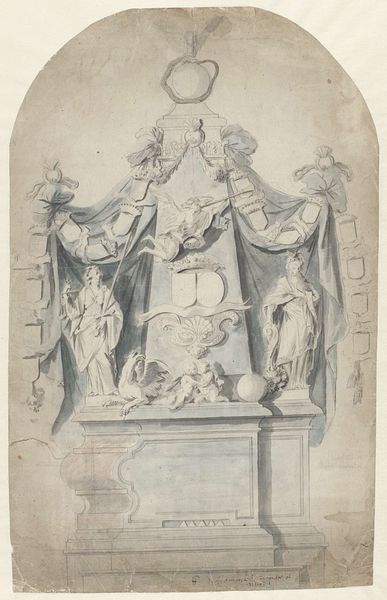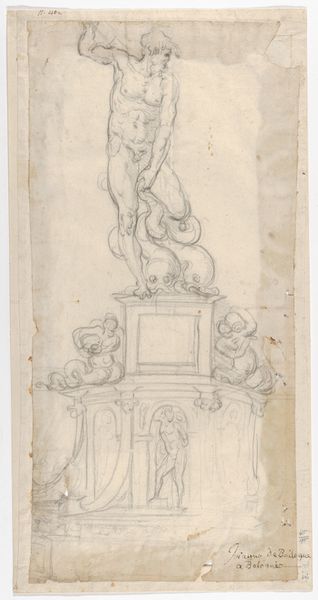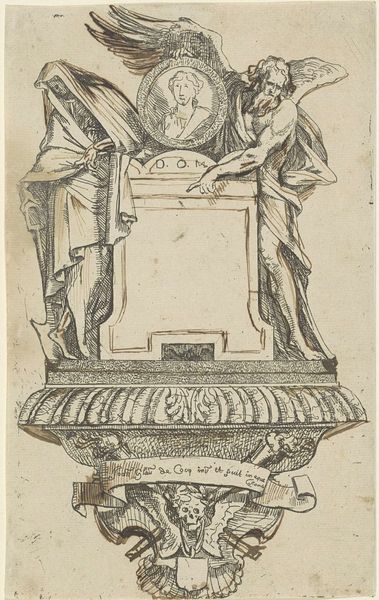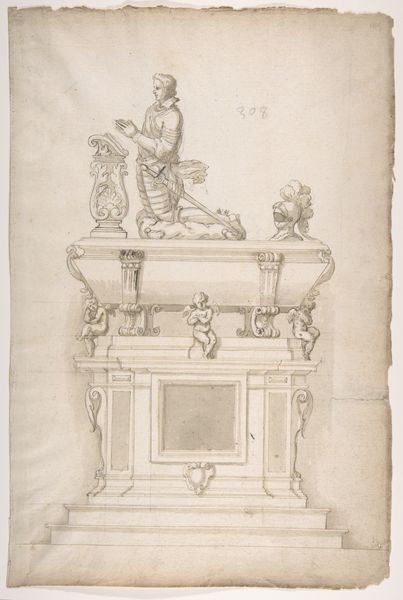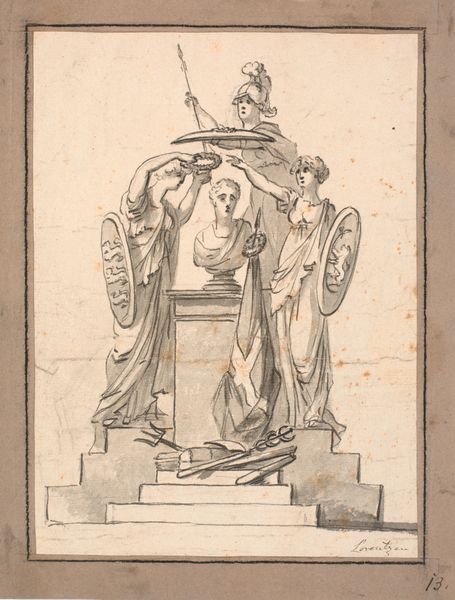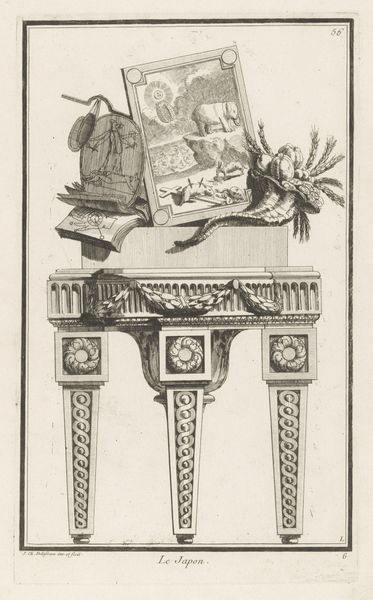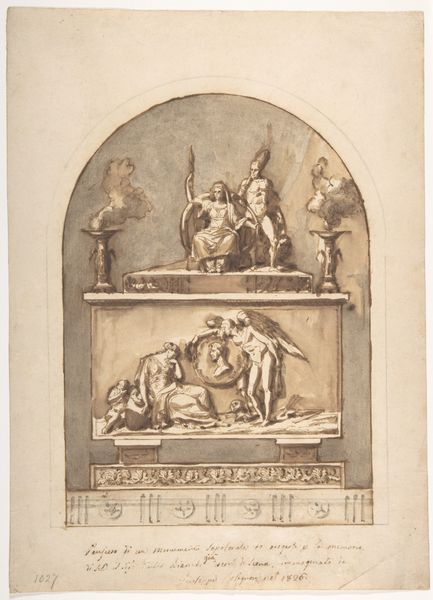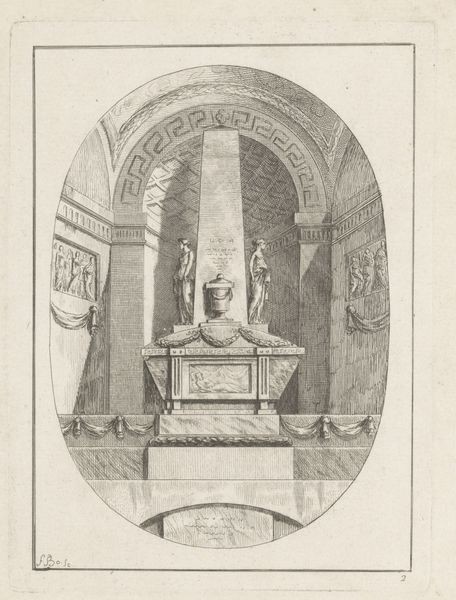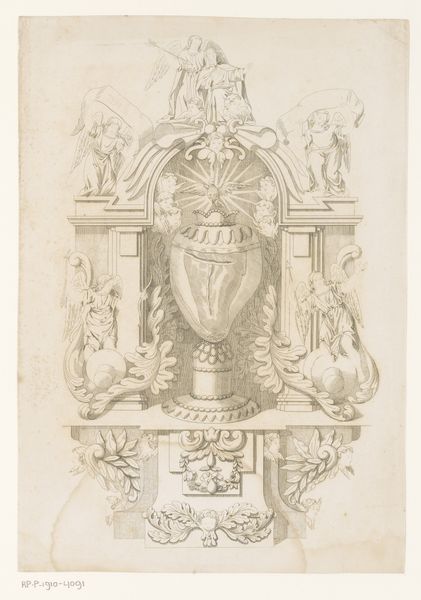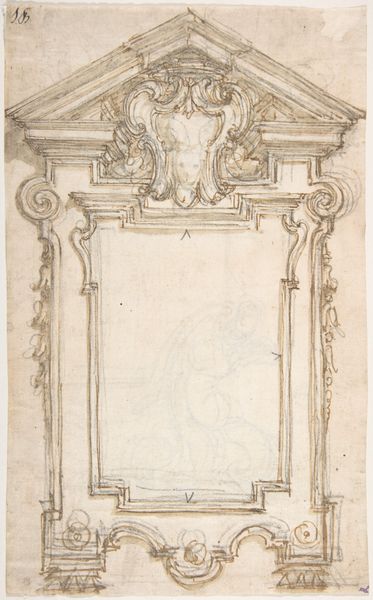
Design after François Duquesnoy, tomb of Ferdinand van den Eynden 18th century
0:00
0:00
drawing, print
#
portrait
#
drawing
#
allegory
#
baroque
# print
#
history-painting
Dimensions: 14 3/8 x 9 1/8 in. (36.5 x 23.1 cm)
Copyright: Public Domain
Curator: So, here we have an 18th-century drawing titled "Design after François Duquesnoy, tomb of Ferdinand van den Eynden," currently housed at the Metropolitan Museum of Art. It's rendered in sanguine, a red chalk. Editor: The whole design is incredibly intricate. It strikes me as rather academic in its composition, like an exercise in capturing baroque sculptural motifs in a drawing format. What catches your attention here? Curator: It's fascinating how this drawing reproduces a sculptural design, blurring the lines between 'original' artwork and reproduction, between the hand of the artist and the legacy of previous labor. We should ask, what’s gained and what's lost in translation through these different modes of production? Consider the labor involved – the initial carving, the reproduction through drawing and perhaps later as a print. Does the change in material change its cultural value? Editor: That's interesting. I hadn’t thought about how the shift in medium affects our perception. Curator: Think about the materiality of the tomb itself, versus this relatively reproducible image. Who had access to the tomb? To this drawing? Red chalk itself becomes a kind of industrial material too - what does its manufacture involve, where did it come from, who processed it and sold it? How does that trade, both materially and figuratively, connect back to the subject's legacy, to the purpose of the tomb itself? Editor: That reframes how I see the image; from academic to commercial in a sense. Curator: Precisely. Considering the social and material context really pushes us to think about value beyond the aesthetic. Perhaps now, reflecting on the production, consumption, and reproduction of images throughout time, from monumental sculpture to a digital image, how would you contextualize this drawing now? Editor: This definitely changes my understanding of the work. Now I appreciate it less as a portrait or artwork but more for the labor behind it.
Comments
No comments
Be the first to comment and join the conversation on the ultimate creative platform.
